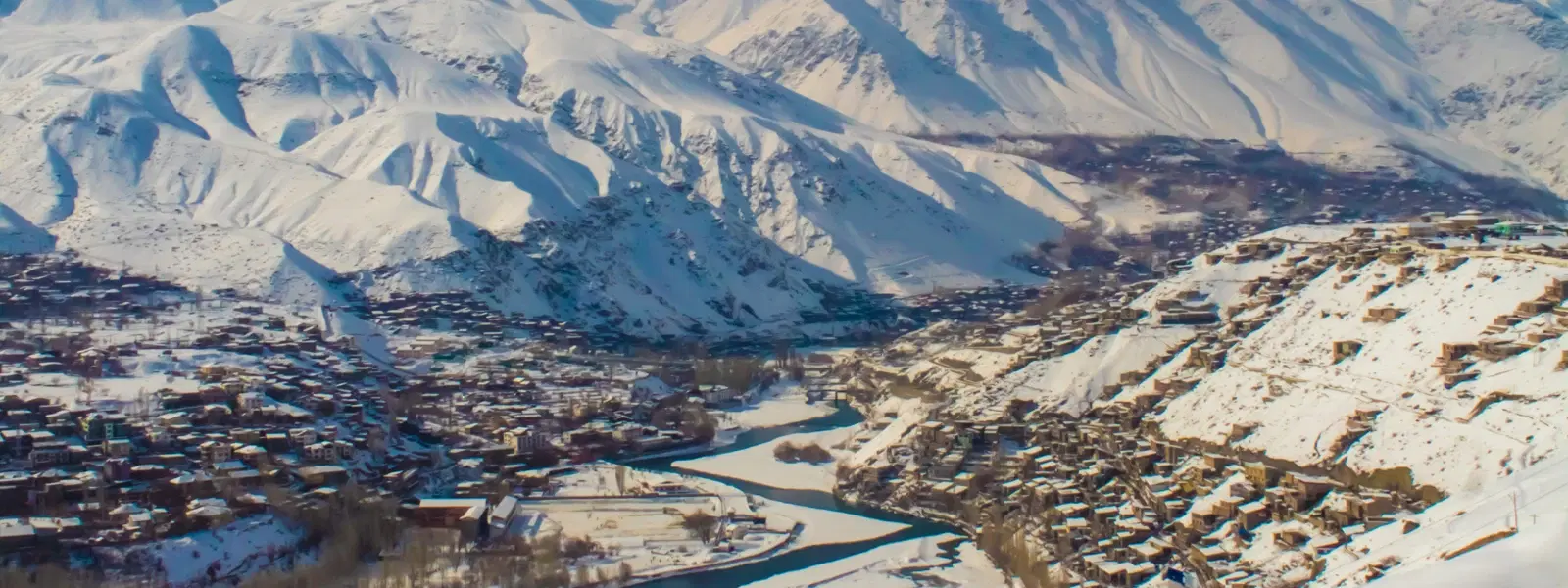
Hotels
•04 min read

Imagine standing amidst snowy expanses, where remote Himalayan villages peek out from a magical blanket of frost—a winter wonderland where the Spiti Valley winter expedition challenge awaits. This unique adventure marries cold-weather trekking, snow camping, and traversing rugged, icy terrains with the thrill of conquering one of India’s most formidable winter journeys. In this guide, you will learn how to plan, prepare, and successfully complete this expedition while soaking in breathtaking views and memorable experiences.
Spiti Valley in winter is a stunning canvas of snow landscapes, where every turn reveals nature’s raw magnificence. The extreme weather, isolated Himalayan terrain, and pristine surroundings make this journey both challenging and mesmerizing. Winter travel to Spiti is renowned for its blend of danger and beauty, offering adventurers a rare glimpse into a world where nature’s harshness meets its serene artistry.
Embarking on this Himalayan winter expedition requires you to face sub-zero temperatures, high-altitude treks, and icy roads that test your navigation skills. The physical demands of long treks combined with the mental toughness to push through adverse conditions call for thorough preparation. Cold weather trekking in Spiti is not for the faint-hearted—it is an expedition that demands both endurance and unwavering determination.
A typical Spiti Valley winter itinerary spans 7 to 10 days, allowing ample time to acclimatize and explore key spots. Consider stopping at Kaza, Tabo, Langza, and Hikkim to absorb local culture while your body adjusts to high altitudes. Each destination offers a unique slice of Himalayan life, combining scenic beauty with cultural insights.
For those dreaming of a true Spiti Valley snow adventure, January and February are the perfect months. These winter months bring maximum snowfall, setting up ideal conditions for a Himalayan winter expedition. However, be prepared for extremely low temperatures that can range from -5°C to -25°C. Understanding these temperature fluctuations is critical for smart planning and ensuring you have the right gear.
When it comes to tackling a Spiti Valley road trip in winter, your transportation choice is paramount. A self-drive expedition gives freedom and flexibility, perfect for seasoned adventurers. On the other hand, joining a guided Himalayan winter expedition provides added support and insights from local experts. Regardless of the option, using a sturdy 4x4 vehicle is crucial to safely navigate the icy, unpredictable roads.
Your packing list should be comprehensive. Essential items include:

Thermal layers and insulated clothing
Waterproof outerwear and robust trekking boots
Quality gloves, beanies, and scarves
Trekking poles and ice axes for challenging paths
Portable camping equipment designed for sub-zero conditions
Layering is key to adapt to varying temperatures, ensuring you remain warm while remaining agile on the trails.
Being at high altitudes means altitude sickness is a real risk. Acclimatize gradually by allowing your body to adjust at stops like Tabo or Kaza. Stay well-hydrated and maintain a balanced diet to ensure energy levels remain high. Additionally, monitor the signs of hypothermia; keeping dry and insulated can make all the difference on a cold-weather trek in Spiti.
Pro Tip
Pro Tip: Invest in high-quality insulated boots and gloves, and carry portable hand warmers to keep your extremities warm during your Spiti Valley winter trek. Staying dry is key to staying warm.
Here’s an example itinerary for your expedition:
Day 1: Journey from Shimla to Kalpa, where the road trip begins amid picturesque landscapes. Day 2: Travel from Kalpa to Tabo, embracing the local culture and breathtaking views. Day 3: Progress from Tabo to Kaza, setting the stage for more challenging treks. Day 4: Enjoy snow trekking and sightseeing in Kaza, with opportunities to experience the raw beauty of winter.
The allure of Spiti lies in its attractions. Marvel at frozen rivers and snow-covered monasteries that seem straight out of a fairytale. Experience panoramic views from Langza village or pay a visit to the world’s highest post office in Hikkim. Each attraction enriches your journey with unique cultural and scenic insights, ensuring that your expedition is as memorable as it is challenging.
The costs of a Spiti Valley winter expedition vary. Expect to invest between ₹40,000 and ₹60,000, which covers transportation, accommodation, food, and gear rental. Costs can vary depending on whether you choose a self-drive adventure or a guided tour, with each package offering its own set of experiences and conveniences.

Reaching Spiti Valley is possible from major Indian cities such as Delhi and Chandigarh. Due to the unpredictable road conditions during winter, securing a reliable 4x4 vehicle is essential. Engaging experienced drivers familiar with winter Spiti 4x4 expeditions can ensure both safety and a smooth journey.
Your stay in Spiti can range from cozy homestays in remote villages to the raw adventure of winter camping. Traditional Himalayan homes offer an authentic slice of local life, where you can experience the warmth of hospitality despite the frigid weather.
January and February are ideal for experiencing heavy snowfall and the full winter adventure.
Costs vary depending on transportation, accommodation, and whether you opt for a self-drive or guided tour. Expect to spend approximately ₹40,000–₹60,000 for a 7–10 day trip.
The trek is challenging and requires physical fitness, but beginners can participate with proper preparation and guidance.
A 4x4 vehicle is essential for navigating icy roads and steep terrains during winter.
Temperatures can range from -5°C to -25°C, depending on the location and time of day.
Conquering the Spiti Valley winter expedition challenge is a transformative experience that pushes your limits and gifts you unforgettable, awe-inspiring moments. With careful planning, the right gear, and a spirit of adventure, you’ll safely navigate the remote Himalayan winter challenge. This comprehensive journey is not just about trekking through icy paths—it’s about embracing nature’s extremes, immersing yourself in local culture, and creating memories that last a lifetime.